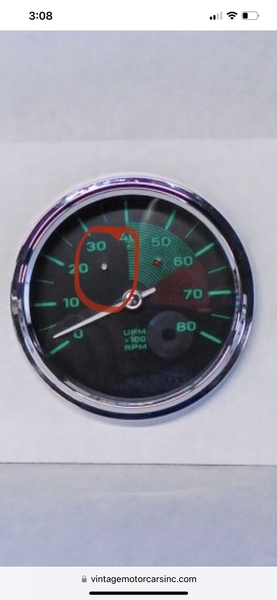If Bob's coil is on a hot shroud, I get what you're saying, @Sacto Mitch.
Is it, @Panhandle Bob? And what voltage is your coil at, engine running?
No. The coil was nowhere near the shroud. I mounted it over on the driver's side fender well.
As to the electrical connections - in a traditional induction setup, there's not a ton of wiring to be "loose", etc. You've got keyed power, a tach wire, and the wires running to the coil from the module. There's not a lot of connections to be bad.
Regarding the "as supplied" coils and MagnaSpark module failures:
I tell new guys in my trade that a point in isolation is just a point in isolation. Two points is a line. Three points is a trend.
Whereas Bob has had 3 module failures, using the entire combination "as supplied" from CBP, I'd call that enough of a trend to say that running a tame coil (or a ballast resistor, which nearly every vehicle with a Kettering ignition used to use, and which I've never had a problem running) would be the first step I'd take to help these modules live a longer life. Everybody can opine about how this ought to work, or why it might be something else - I'm not super-concerned with it. I just want Bob's (and Chappy's) setup to work, and if running a different coil fixes it, than it is what it is.
Since Chappy experienced a coil failure with the supplied MagnaSpark coil, and since the coil costs $31 from CBP, and since I've got one I haven't used yet (because its cheesiness gave me pause), I'm going to out on a limb and say that it's at least possible we've got a trend here. If Bob runs fine on his Blue Coil, I will have seen enough.
If it walks like a duck, and quacks like a duck, it's probably not a duck-billed platypus.
Mitch has happily been running his MagnaSpark distributor for years... on a blue coil. Gordon has been running his on the supplied coil for two seasons, but I have no idea how many miles Gordon puts on his car, or if the amount of miles would be proof of concept that there is nothing wrong with the design. A 1.1 ohm coil is really, really hot to run in an induction configuration.
If I use a distributor at all (even for one more season), I'll probably just run a CDI box and use the CB module as a trigger. If I don't want to go to that much work, I'll run a coil with at least 3 ohms of resistance.
You guys do what you like. You do you. I’ll do me.




